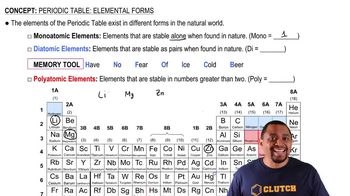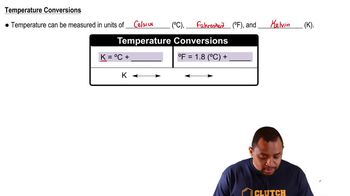Here are the essential concepts you must grasp in order to answer the question correctly.
Enthalpy of Solution (ΔHsoln)
The enthalpy of solution (ΔHsoln) is the overall heat change that occurs when a solute dissolves in a solvent. It is calculated by considering the enthalpy changes associated with breaking solute-solute and solvent-solvent interactions, as well as the formation of solute-solvent interactions. A positive ΔHsoln indicates that the process is endothermic, absorbing heat, while a negative ΔHsoln indicates an exothermic process, releasing heat.
Recommended video:
Breaking and Forming Interactions
When a solute dissolves, energy is required to break the intermolecular forces between solute particles (ΔHsolute) and solvent molecules (ΔHsolvent). This energy input is countered by the energy released when new solute-solvent interactions are formed (ΔHsolute-solvent). The balance of these energy changes determines whether the overall process absorbs or releases heat, influencing the temperature of the solution.
Recommended video:
Elemental Forms of Elements
Temperature Change in Dissolution
The temperature change during the dissolution process is directly related to the sign of ΔHsoln. If ΔHsoln is positive, the solution absorbs heat, leading to a decrease in temperature, while a negative ΔHsoln results in heat release, causing an increase in temperature. Understanding this relationship helps predict how the dissolution of a solute will affect the thermal properties of the solution.
Recommended video:
Temperature Conversion Formulas
 Verified step by step guidance
Verified step by step guidance

